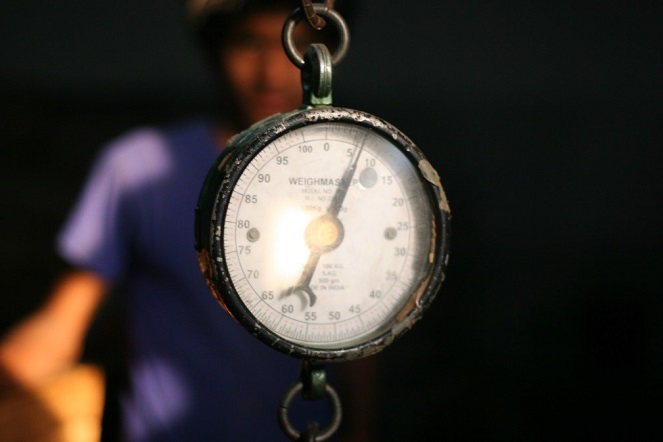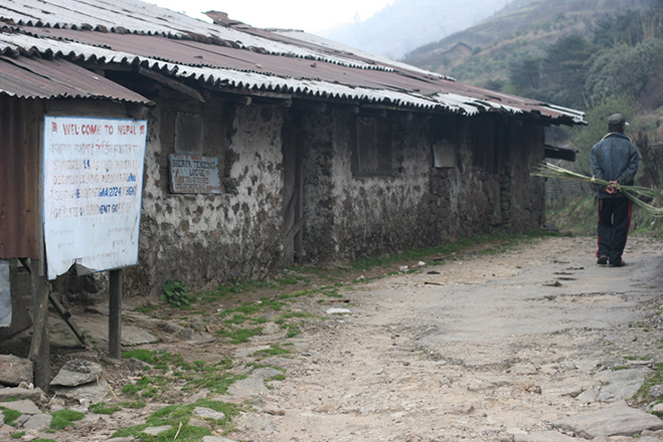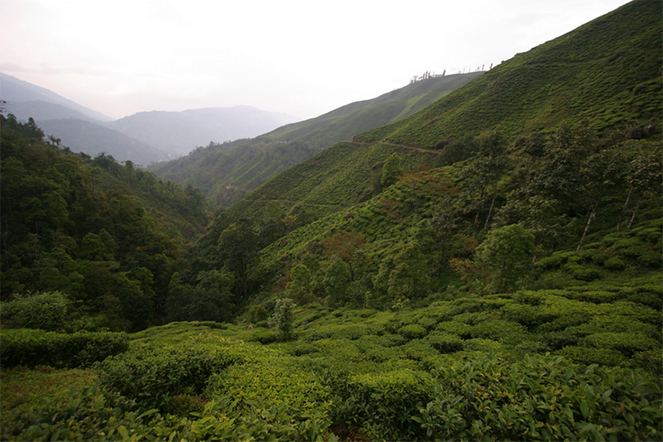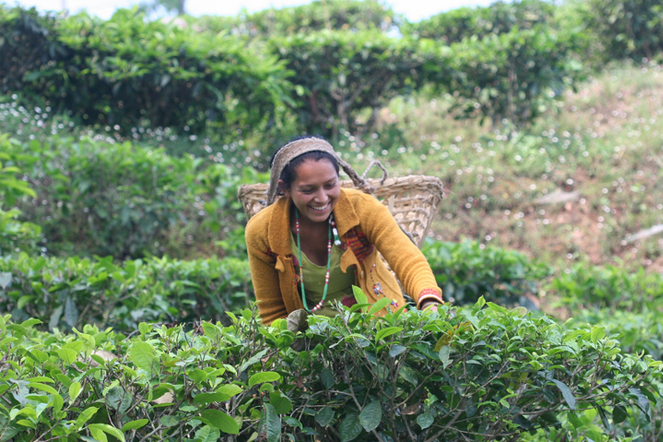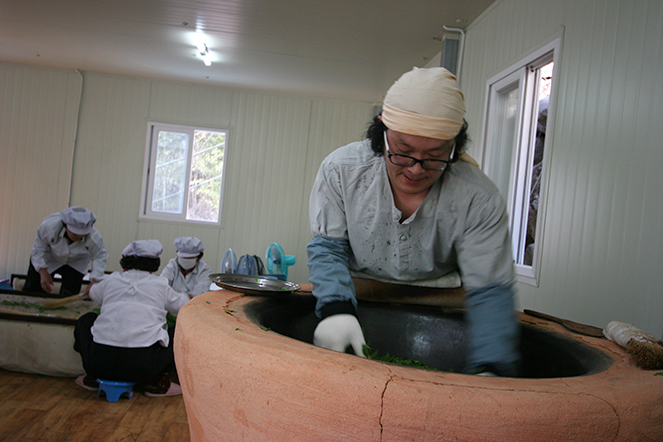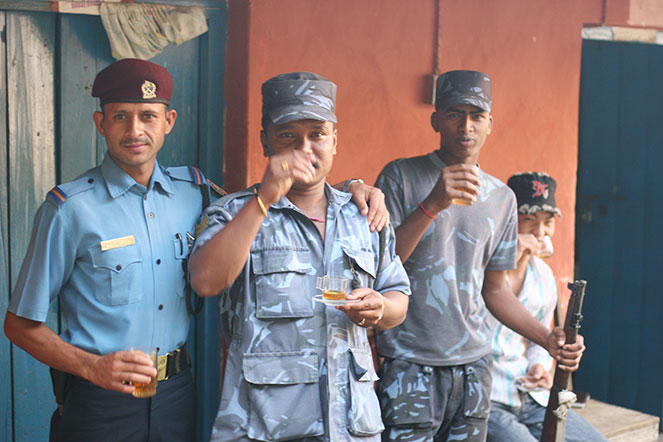Making tea requires great precision. Scales are used to check the weight of the leaves, then there is a kettle with volume markings , sometimes a thermometer, and a timer. When I’m on a tea plantation, I like to photograph the different measuring instruments I see, like here, in Nepal.
Rolling Darjeeling leaves
When you read tasting notes on Darjeeling teas, you learn that the leaf can be more or less rolled, depending on the batch. This is what the rolling looks like. As soon as the leaves have finished wilting, on the upper level of the building, they are dropped (see photo) into this container, which has a press. Rolling, as it is performed in Darjeeling, takes just a few minutes. It prepares the leaves, by lightly crushing them, for the following stage: oxidation.
The teas and landscapes of Assam: an incredible contrast
Assam teas have scents of honey, tobacco and spices and a very pronounced aromatic profile, unlike some of the flat countryside in this region. The teas are particularly astringent, and here too, the vocabulary used to describe this sensation contrasts with the words we might use to depict the landscape. Astringency is marked by a contracting of the tissues of the palate, while this beautiful field of tea relaxes me as soon as I see it.
Spring harvest in Nepal
Every year, the first-flush Darjeelings open the season, followed by the spring harvests in Nepal, then China and Japan. I have now started tasting the first samples of Nepalese teas. They come a few weeks after the Darjeelings, due to the harsher climate. Yet the two regions are not so far apart, barely a few days’ walk, and you could pass from one country to another without noticing it unless you pay attention to the signs.
Some good news from Darjeeling despite the unfavourable weather
The news I’m getting from Darjeeling is not very good. The planters are disappointed by the small quantities of tea harvested in March. This is due to low temperatures and a lack of sunshine and rain. So far, production is down by almost a third. However, as long as you act quickly, there are still some very fine teas. I have already bought several batches from gardens where the quality is improving year on year, like Gielle, Rohini and Teesta Valley. And a tiny batch of “Puttabong SFTGFOP1 Moondrops”: anyone who gets a chance to taste this tea will love it.
Let’s celebrate spring!
To celebrate the arrival of spring with you, what better than to take a break together, put the kettle on, sit down in an upright position, empty our minds, shut our eyes, inhale deeply while the leaves infuse, get ourselves in the right frame of mind, and prepare to drink tea. And then, to open our eyes on this beautiful landscape, to nature reawakening, the first buds opening, the return of life.
Olfactory journey for the Césars
At the end of February I was invited to lead a tasting session for some actors, most of whom had been nominated for a César award. Throughout the day, they arrived at a suite in a Paris hotel. Among them was also Kevin Rolland, Olympic Gold medallist at Sotchi (see photo), as well as television presenters and journalists. I enjoyed introducing them to some Grand Cru teas such as Dong Ding, Tawaramine, Dan Cong and Jukro. And I surprised them with Pu Erh. Many of them really appreciated this astonishing tea. They stuck their nose into the infused leaves, which reminded some of a walk through the forest, others of a stay on a farm. An olfactory journey.
The first selections of first-flush Darjeelings
As happens every year at the same time, the first samples of first-flush Darjeelings are starting to arrive. There are never many during the first week, then during the peak of the season, around the end of March, I can taste dozens every day. Each one represents a very small batch of about 100 kilos. I have just chosen two: the Rohini “early spring” and the Longview FTGFOP1 ex-5. They are characterised by their fresh, vegetal, floral and zesty notes.
Jukro, a fine and rare tea from Korea
Jukro from South Korea is one of the finest quality teas in the world. I know just one farmer who produces it. He can only do so in the first days of May, using his best leaves. The quantity obtained is so small that only a few customers are able to enjoy it. I think you can imagine how eagerly I anticipate his new plucking every year. The richness of the tea’s flavours and its complexity and length in the mouth are worth tasting at least once in a lifetime.
A break for tea
At the moment there is much talk of the violence in Ukraine; tomorrow it will be somewhere else. Violence, blood, weapons: it is as if man cannot live without them. The quality of this photo is not good, I took it quickly, in Nepal, during a visit by the army to the tea plantation where I was staying. That was a few years ago, when the country was experiencing a bloody conflict, but at that particular moment, despite the fighting, the soldiers wanted to put down their weapons and enjoy a good cup of tea.

